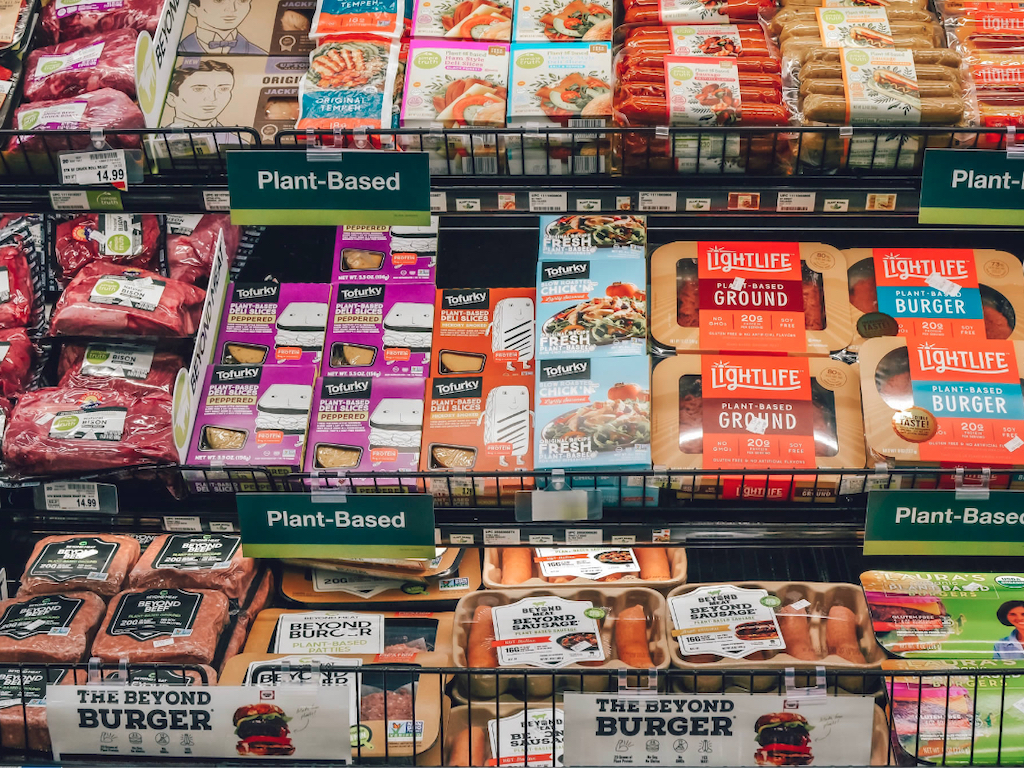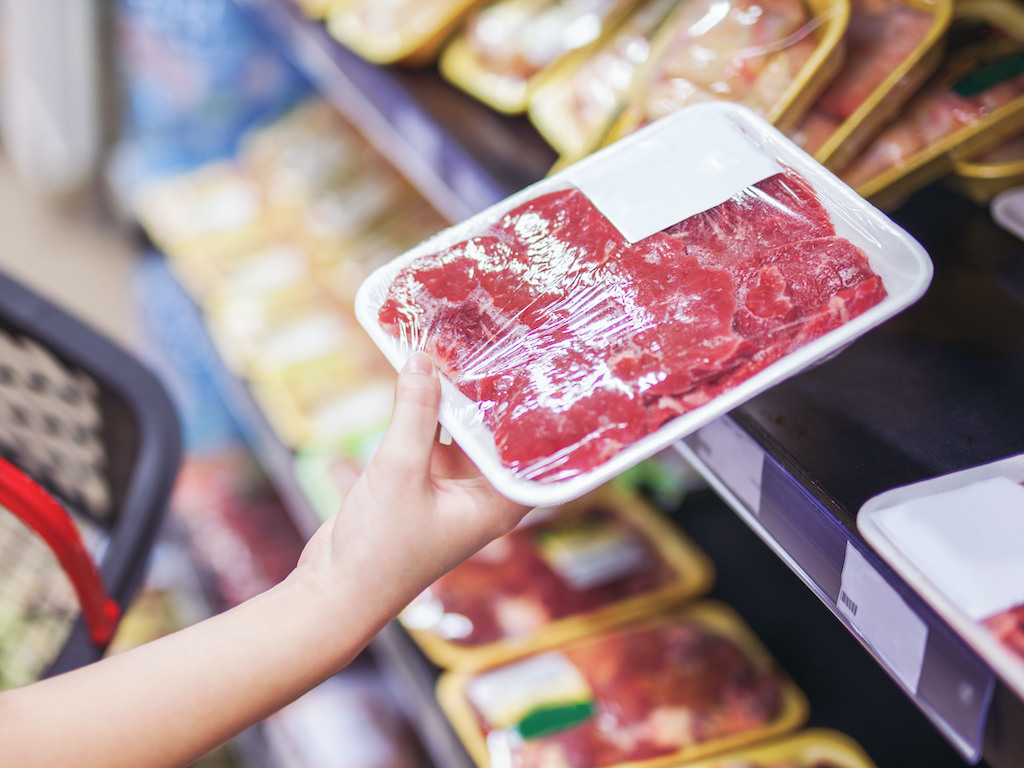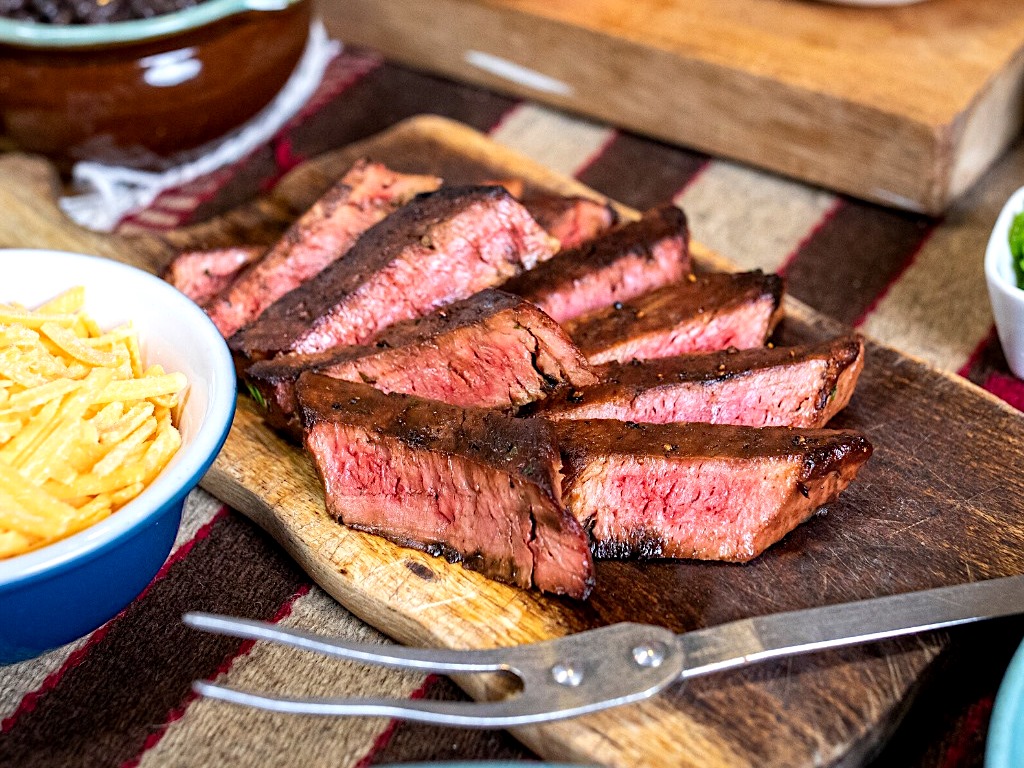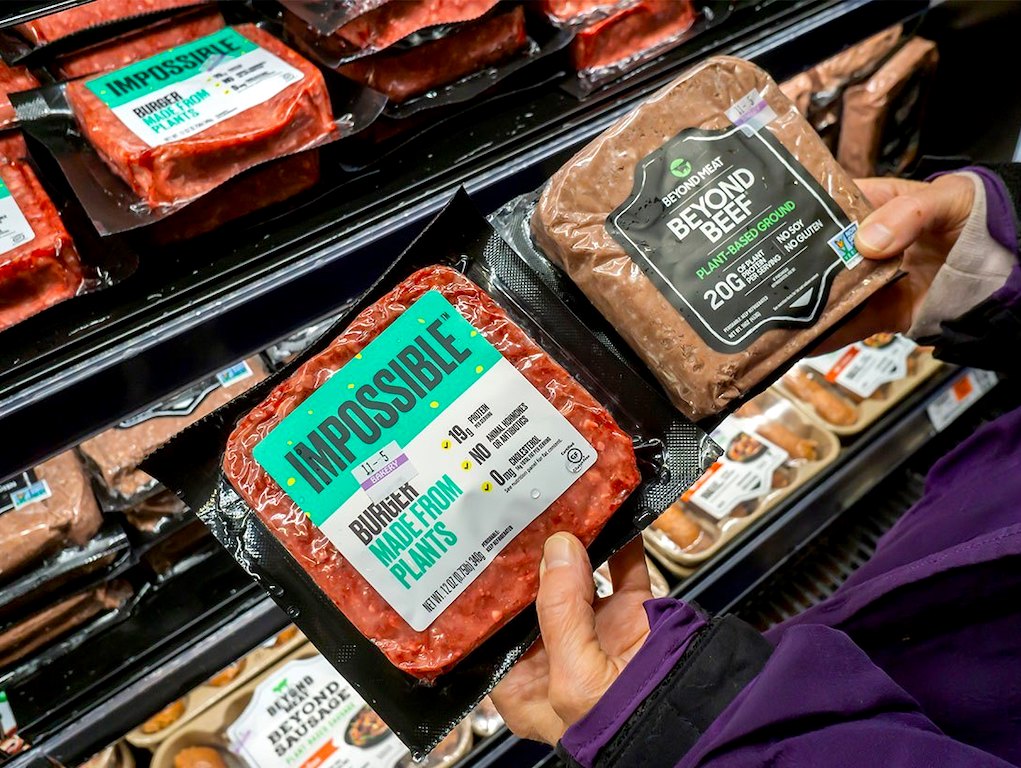7 Mins Read
Sales of plant-based meat alternatives have skyrocketed over the past year, as consumers turn their attention to health, nutrition, sustainability and food provenance more than ever before. But who exactly is driving the growth of plant-based meat, and what reasons are most critical in pushing consumers to turn to alternative proteins? Plus, why are these products are attracting some shoppers, while others don’t seem convinced enough to add them to their grocery baskets? We take an in-depth look at some recent consumer research studies that offer hugely useful insights.
Plant-based folk will pay a premium, especially ethical younger generations
While the plant-based boom has allowed many producers to begin lowering prices as they scale to meet demand – take Impossible Foods, for example, who have cut their price tags three times in the last 12 months – many products are still more costly than their (often industry subsidised) animal-based counterparts.
So who’s willing to pay the extra couple of dollars? Obviously, people who follow a plant-based diet come first, with recent data coming from vegan-focused market research firm Moonshot Collaborative indicating around three-quarters of plant-based consumers are willing to pay a premium for plant-based alternatives. But there’s a limit: the study, based on U.S. consumers, who participated in an online questionnaire in January 2021, interestingly found that when the premium reaches 50% or more, only 1 in 25 consumers – even if they were following a plant-based diet – would pay up.
By contrast, 88% of vegetarians, 78% of flexitarians and 62% of meat-eaters said they’d be okay with paying more for plant-based foods.

Moonshot Collaborative’s poll also showed that younger plant-based buyers in particular were more likely to get their wallets out for plant-based alternatives, with a whopping 92% of Gen Z consumers, 81% of millennials and 72% of Gen X shoppers saying they would pay more. Of course, it needs to be noted that the study was based on a small sample size of just under 900 respondents, but it’s still indicative of the youth-driven plant-based trend we’re seeing.
One more factor that makes a young, plant-based person even more likely to pay the premium for their alternative proteins? Their love for animals. Data showed that 93% of plant-based buyers who are motivated for animal welfare reasons would pay up, with sustainability-related concerns following closely behind at 86% and health reasons at 85%.
Meat lovers are probably still buying beef – and at a premium too
Although many plant-based brands say their products are squarely targeted at omnivores and flexitarians – again, take Impossible Foods who claims their 92% of sales of their “bleeding” plant-based beef patties are directly displacing of animal purchases – it doesn’t always seem to be working out that way. In fact, there’s some evidence showing that meat-lovers still appear to be buying conventional beef, and are willing to pay more for them too.
Note that this January 2021 study has been commissioned by the Cattlemen’s Beef Promotion and Research Board (CBB), so there’s underlying bias we need to be aware of, but the results are still worth taking a look at – especially if we want to understand the challenges to mass adoption of alternative proteins.

According to the report, cattle-based beef remains a top choice for consumers (chosen three-times more than their plant-based counterparts, to be exact) because what people value is its taste, appearance and “naturalness”, as well as nutritional concerns like protein and iron content – though the latter factors had a much less significant impact on people’s decision-making.
Consumers do cite animal welfare, health and the reduced environmental impact of plant-based proteins as a benefit they consider, but for non-plant-forward folk, their love for the experience of meat simply outweighs these issues and they’re even willing to pay more for quality beef in both retail and F&B channels.
One of the most stand-out findings from the report is the effect that changes in conventional beef prices has on consumer decision-making. It appears to matter more how much the cost of cattle-beef is fluctuating – which is impacted by things like supply chain disruptions, which is why we saw rising meat prices during the Covid-19 related slaughterhouse shutdowns – rather than how much their plant-based counterparts are being sold for.

For food and agricultural economist Jayson Lusk, this particular result from the report is something to think about. In his analysis of the research, Lusk believes, based on the data in the report, that the price drop of the Impossible Burger that we recently saw would actually simply turn more existing plant-based consumers away from other rival plant-based brands, towards Impossible Foods’ products.
“1% drop in Impossible Burger’s price would lead to a 0.14% reduction in purchases of Store-Brand ground beef at retail grocery (across all consumers). If we extrapolate that to a 20% decrease, that suggests the recently announced price change will lead to a 2.8% decline in Store Brand ground beef,” Lusk explains.
“This reduction comes almost entirely from consumers who are not regular meat-eaters…In fact, within the regular meat consuming segment we would project the price drop in Impossible would result in nearly 3x the impact on Beyond Beef as Store Brand ground beef.”
Taste is the missing factor when it comes to mass adoption
What the above CBB-funded research suggests is that perhaps the missing factor that would help convince more mainstream consumers to choose the plant-based alternative is taste and experience, contrary than to the focus that many alternative protein experts have placed on price parity.
In FoodNavigator-USA editor Elaine Watson’s overview of the report, she highlighted: “When it comes to price, the assumption from many stakeholders in the plant-based industry has been that as plant-based meat approaches price parity with conventional meat, it will aggressively gain market share and ultimately even displace animal-based products [assuming all other things are equal, which right now, they are not].”

Therefore, it’s all about giving consumers an alternative that could deliver on the texture, taste, bite and experience of real animal meat, such as slicing into a cut of steak, or diving into whole muscle cuts such as briskets or T-bones, or lamb racks, a fillet of fish, and the like.
So far, many agree that plant-based players have managed to create pretty good replicas of ground or minced meats in formats like crumbles, patties or sausages, but have yet to reach this level of innovation, though it must be noted that there’s a growing cohort of startups doing exactly that – such as Revo Foods and Redefine Meat, two plant-based food techs who are 3D-printing realistic cuts of salmon and steak respectively, or Meati Foods’ mycelium-based vegan chicken breast.
There’s also hope in the cell-based industry. Though only one startup, Eat Just, has managed to reach the commercialisation stage, many are cultivating prototypes of everything from lobster meat to bluefin tuna and even fatty pork belly and bacon – the very animal foods that meat-eaters love, crave and can’t seem to give up.
What about when consumers buy plant-based alternatives?

One last food for thought. It might not just be about the product itself, after all. It also matters when a product hits the shelves, with an enlightening paper recently published in the Journal of Consumer Research examining what shoppers are steering clear of or shifting towards in the middle of the ongoing pandemic.
According to the researchers, if the product hasn’t been around on shelves for long, like plant-based meat alternatives, “marketers might be better served promoting in the summer months, when people are less likely to encounter contagious cues and are more receptive to novelty”.
Lead image courtesy of Alamy.




